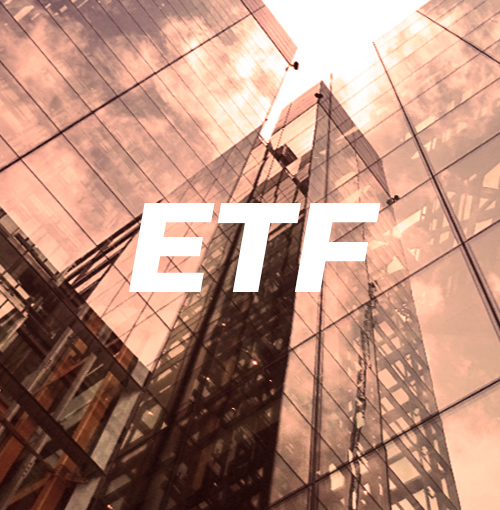
Maximizing Investments with Class-C Shares: An Extensive Study
Investing in mutual funds has always been considered an intelligent way to diversify a portfolio, but the intricacies of this financial instrument are often overlooked. Among the many features of mutual funds, the class of shares involved is an essential factor that influences the performance of an investment over time. In this comprehensive guide, we will explore one such category, the Class-C shares, uncovering their unique attributes, advantages, drawbacks, and ideal usage scenarios. This article will also feature an engaging real-world example, shedding light on the practical aspects of investing in these types of shares.
What Makes Class-C Shares Unique?
Class-C shares are a distinctive breed of mutual fund shares, typified by an annual, fixed percentage charge known as a level load. This load essentially functions as a commission for entities assisting the investor in fund selection and is incurred yearly. By contrast, front-end loads imply charges levied during the share purchase, and back-end loads imply charges assessed upon selling the shares. A different category, no-load funds, avoids these commission charges altogether, incorporating the costs into the net asset value (NAV) of the fund.
Important: While the absence of an upfront commission is a tempting aspect of Class-C shares, investors must balance this advantage with the ongoing 12b-1 fees, which can accumulate significantly over time.
Interesting Fact: Class-C shares got their name from the Investment Company Act of 1940. The 12b-1 fees that they charge are named after section 12b-1 of the same Act.
Unraveling Class-C Shares: Deeper Insights
When juxtaposed against other mutual fund share classes, Class-C shares usually exhibit lower expense ratios than Class-B shares but higher than Class-A shares. The expense ratio represents the total yearly costs of managing a mutual fund. Consequently, Class-C shares become a suitable choice for investors with a short-term horizon, i.e., those intending to hold the fund for a few years only.
The recurrent charges contributing to the C-share level load are formally termed as 12b-1 fees, originating from a section of the Investment Company Act of 1940. The annual cap on these fees is 1%, within which the distribution and marketing expenses can reach 0.75%, and service fees can peak at 0.25%. The 12b-1 fee chiefly incentivizes intermediaries for selling the fund's shares, effectively translating into an annual commission paid by the investor to the mutual fund.
Remember: The 12b-1 fees contribute to the expense ratio, affecting the overall return of the mutual fund.
Although 12b-1 fees also apply to other share classes, their impact varies. For instance, Class-A shares often bear lower 12b-1 fees to balance the high initial commissions they entail. Class-C shares, on the other hand, typically incur the maximum 1% fee. This can consequently push the total annual expense ratio above 2% for the Class-C shareholder.
An additional trait that distinguishes Class-C shares is the absence of front-end loads. However, they often have a minimal back-end load, known as a contingent deferred sales charge (CDSC), much like Class-B shares. But, the back-end loads for Class-C shares are considerably lower, usually around 1%, and tend to disappear once the investor has held the mutual fund for a year.
Interesting Fact: Unlike Class-A shares, which have lower 12b-1 fees, Class-C shares almost always pay the maximum 1%.
The Pros and Cons of Class-C Shares
Investing in Class-C shares carries both merits and downsides. On the positive side, they have no upfront commission, ensuring that the entire deposit is invested. Moreover, there's no back-end sales charge after one year, making them a viable intermediate-term investment (1-3 years). However, the higher expense ratios, back-end load on first-year withdrawals, and the less-than-optimal fit for a buy-and-hold strategy can potentially mar the investment experience.
Tip: Don't forget to consider the back-end load on first-year withdrawals when investing in Class-C shares. This could impact your returns if you need to withdraw your funds within the first year.
The Ideal Class-C Share Investor
Given the back-end load on short-term redemptions, Class-C shares might not be ideal for investors planning to withdraw funds within a year. Furthermore, the increased ongoing expenses of Class-C shares make them less attractive for long-term investors.
Imagine an investor has a $75,000 investment that they plan to park in a fund returning 5% annually, but they aren't sure of the exact duration - it could be two, maybe three years.
If this money is invested in a fund with an annual operating fee of 2.00% (which could be the case with some Class C shares), over a period of three years, the ending balance will be approximately $80,639. This is taking into consideration the compounding effect of the investment returns over these three years.
Tip: If you're an investor planning to hold a fund for more than one year but less than three, Class-C shares could be an ideal option.
In comparison, if the same $75,000 is invested in a fund with a lower operating fee of 0.75% (similar to some Class A shares), the ending balance over the same three years would be approximately $83,338.
Even over a relatively short period of three years, the difference in ending balance is around $2,699 - all due to the variation in operating fees. In such scenarios, Class C shares could be a more expensive proposition, underscoring why they're often more suitable for investors with a shorter, definite investment horizon.
Thus, Class-C shares are most suited for investors looking to hold the fund for an intermediate period, ideally over a year but under three. This way, investors can avoid the CDSC while preventing the high expense ratio from significantly eroding the fund's overall return.
Fact: The differences in final values of investments with varying fees can be substantial when held for a substantial period, such as in a retirement fund.
Real World Example of Class-C Shares
The BlackRock High Equity Income Fund offers both Class-A and Class-C shares. For the Class-A shares, an expense ratio of 1.37% applies, with a 12b-1 fee of 0.25%. There is also a 5.25% maximum front-end load that decreases based on the invested amount. In contrast, the Class-C shares lack a front-end load but impose a maximum 1% CDSC on shares held for less than a year. The 12b-1 fee for these shares is capped at 1%, driving the overall expense ratio to 2.12%.
Interesting Fact: Even within the same fund, Class-A and Class-C shares can have significantly different expense ratios and fee structures. For example, the Davis New York Venture Fund's Class-C shares have a significantly higher expense ratio than its Class-A shares due to the addition of the 12b-1 fee.
Tip: Always compare the different share classes offered by a mutual fund before making your investment decision.
Concluding Summary
Class-C shares, despite their complexity, offer a unique set of attributes that can align with certain investment strategies. They are ideally suited for investors with a short to intermediate investment horizon, primarily due to their fee structure. However, long-term investors might want to explore other options due to the higher expense ratios. It's crucial to understand these nuances to make an informed investment decision.
- Class-C shares are characterized by a level load that is charged annually as a fixed percentage.
- Compared to Class-B shares, Class-C shares often have lower expense ratios, but higher than Class-A shares.
- The 12b-1 fees are an essential part of Class-C share's expenses, primarily rewarding intermediaries who sell the fund's shares.
- Class-C shares do not have front-end loads, but often carry small back-end loads, usually around 1%, which tend to vanish after a year.
- Class-C shares work best for investors planning to hold the fund for an intermediate period - more than one year but less than three.
Choosing the right class of mutual fund shares can have a significant impact on your investment returns. It's crucial to understand the fees involved and how they can affect your long-term financial goals.
- Share this article





